By Bob Dyer, from email sent out 9-2016
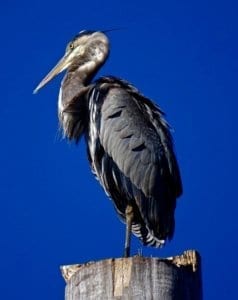
Great Blue Heron
The Great Blue Heron (GBHE) is the largest heron (or egret) in North America. It varies from 45-54 inches tall. Weight depends upon location within the continent. This information is from Wikipedia. Oregon is the closest location they cite for weight, at an average of 4.6 lb. GBHE can adapt to any wetland habitat. We see them here in the freshwater channels at Shollenberger or the slightly saline central pond and along the Petaluma River. They are looking for fish but will not turn down a small rodent, like a vole, they spot in a nearby field. The GBHE does not nest in the largest Sonoma County heron/egret colony on West 9th Street, Santa Rosa, but prefers the North Petaluma Marsh. PWA docents have recorded almost 150 fledglings from 2003-2014. Not everything has gone right for the species, however, as a result of highway construction, and nature.
On the next page you will see two views of the Shollenberger Colony (catalogued by the Cypress Grove Research Center as site #121) which docents observed from 2003-2012. A “war” with two fronts, Cal-Trans and Dutra, sealed its fate. Ironically, over the course of three-four years, we were able to find a measure of “peace” with Dutra Products, injecting some reasonable “Conditions of Approval” into their final EIR that might have saved the colony.
Cal-Trans was not unsympathetic to our efforts to save the colony, and even changed the design of the off-ramp, but the structure was still too close to the nesting tress and, finally the trees were chopped down, in January, 2013. We had observed 424 fledging herons and egrets of #121, during its reign.
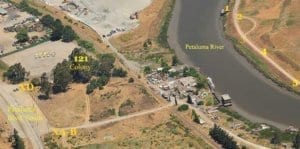
Colony #121 from the air. Numbers and letters were observations spots.
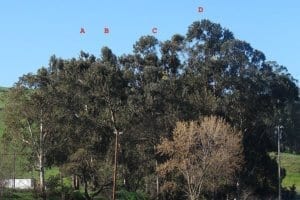
The Shollenberger Colony as seen from Shollenberger Park. A-D were used as area designators to aid in numbering nests (e.g. A-1, B-5).
After #121 was destroyed, negotiations with Cal-Trans shifted to the issue of “mitigation”. An effort was made to have them pay for shoring-up the McNear Colony (#139) which GBHE and Snowy Egrets (SNED) established in 2010, a mile or so north on the east side of the river. The colony was on the property of politically-strong Pomeroy Industries, however, and it refused the concept of a conservation easement. In December of 2014, a massive storm blew down the colony tree. During the five years of #139, docents observed fledging of 46 GBHE and 137 SNEG. There is still the open issue of mitigation, the latest offer being for Cal-Trans to pay $50,000 for the planting of appropriate trees somewhere in the Petaluma Wetlands. A more extensive history of these battles was recently given to our Historian, Nora Pearl, with source documents available on request.
Len Nelson and I have some wonderful photos of GBHE as memories of the McNear colony. The following show a pair of Blue Herons in courting behavior, nest-building, and feeding of large chicks.
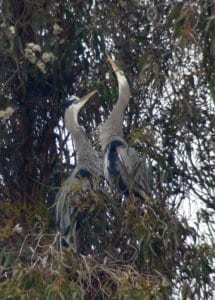
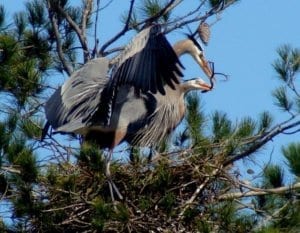
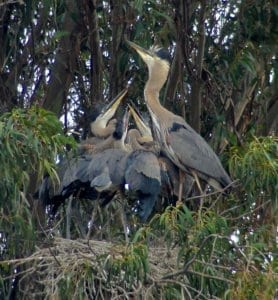
Typically, this herons show up in March. Eggs take 27 days to hatch, and the successful chicks are usually gone by the beginning of July.
But weep naught for blue heron refugees as there is a third colony in the wetlands! In 2009, docents starting observing herons and egrets at a third colony (#40) just south-east of Ellis Creek (the creek itself). This was a colony that had gone dark for a few years but which became active again (a rare occurrence says the expert, Dr. John Kelly, of Cypress Grove Research Center, which collects our observations). This became the home of some of the blue heron from the Shollenberger Colony, we believe. From 2009-2014, 74 GBHE chicks fledged. In 2010, we recorded a record 20 GBHE young going off into the world. A typical year is more like 10-12. Great Egrets and Double-crested Cormorants also nest in #40.
A final photo shows a group of Great Blue Heron congregating in late February, kind of like a social mixer, absent the open bar.
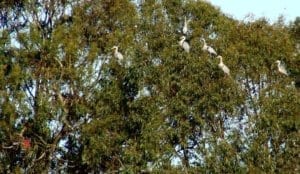
Where has a beautiful bird like you been all my life!


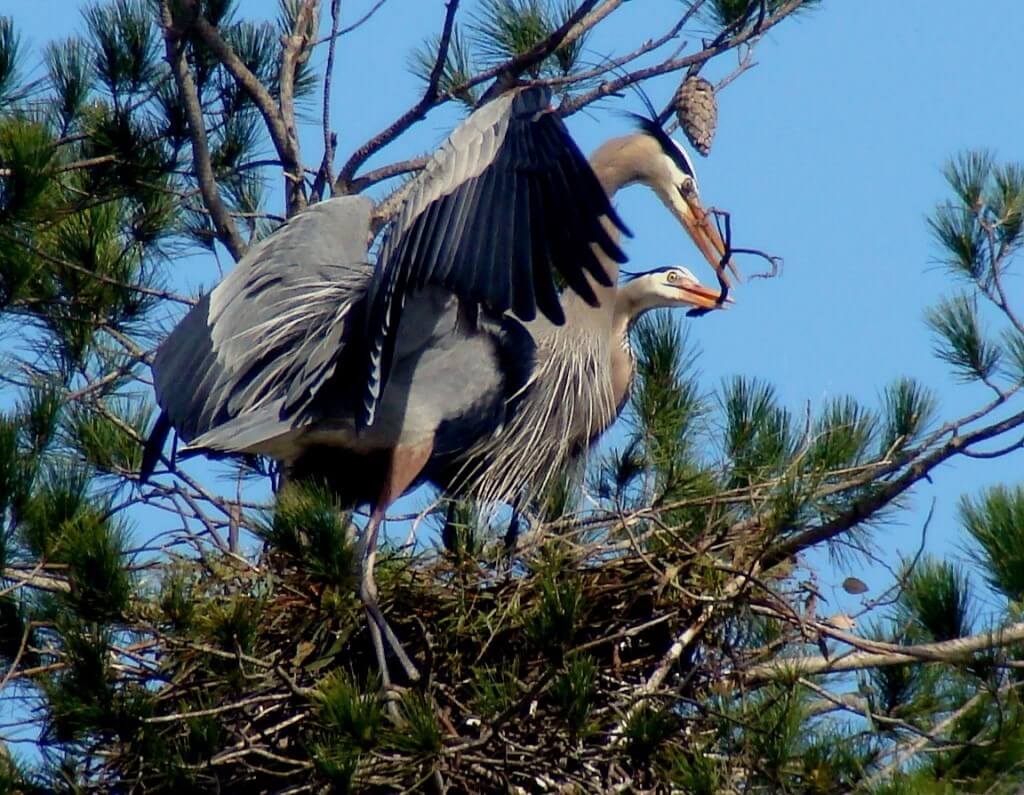
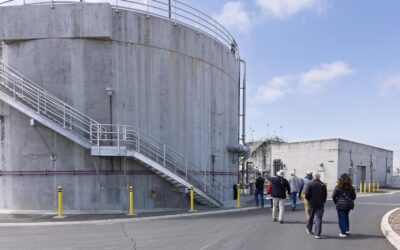
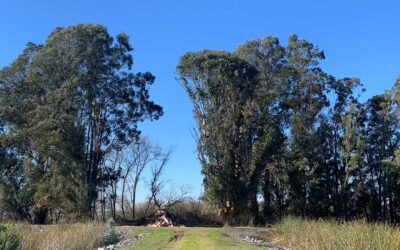
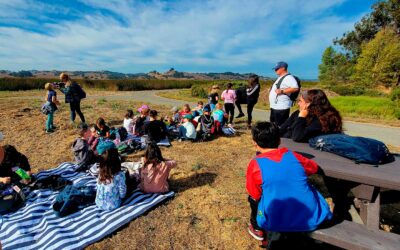
0 Comments